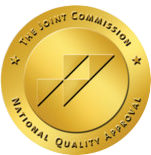A successful teleNeurology program begins with consideration of a myriad of details that can seem overwhelming. To help, Access TeleCare has developed a resource on how to choose a teleNeurology partner, which includes five critical areas to consider. The checklist, How to Choose a teleNeurology Partner: 21 Absolutely Critical Criteria will help you address the most important criteria as you evaluate your options.
1. Quality
A variety of third-party organizations have developed rigorous accreditation criteria for healthcare organizations. These external validators are always a good starting point for assessing quality.
- The Joint Commission is perhaps the country’s premiere healthcare accreditation body. The commission categorizes telehealth organizations under the umbrella of ambulatory care, which includes technology-based telehealth services like the ones Access TeleCare offers. Joint Commission accreditation ensures that the teleNeurology partner meets the same high standards as your hospital, including ongoing professional practice evaluations, and a commitment to reach zero harm through high reliability science.
- Additionally, the DC-based nonprofit URAC in partnership with the American Telemedicine Association (ATA) has developed a telehealth-specific accreditation seal which marks an organization as going above and beyond regulatory compliance in telehealth operations. The seal denotes telehealth vendors which use evidence-based standards to promote safe, quality, competent healthcare regardless of the model used.
- In addition to external validators, choosing a teleNeurology partner should include an evaluation of the vendor’s internal quality programs. Look for a comprehensive quality management program, primary-source verified credentialing, licensing, and privileging, and a dedicated point of contact for each client to ensure program success.
2. Clinical and Practice Management
Evaluating a teleNeurology partner’s clinical and practice management isn’t always straightforward, but there are indicators to ask about which will help ensure you are choosing a high quality teleNeurology partner.
It is a given that your teleNeurologists should be board-certified. But beyond board certification, look for seasoned neurologists with years of experience as well as fellowship training in sub-specialties such as vascular neurology, neurophysiology, neuromuscular or epilepsy.
Additionally, there are two key metrics to look at which are likely to indicate a particularly high-quality teleNeurology partner: average time to video, and thrombolytic rate. Self-reported time-to-video averages can be misleading, so make sure that the metric measures when a provider was actually on video (not just on a call), and able to respond to evaluate the patient and collaborate with on-site staff. Thrombolytic rates measure what percentage of stroke patients who arrive within the 4.5 hour window of eligibility to receive tPA are actually receiving it.
Finally, high-quality clinical practice management includes strong clinical support services like recruitment and onboarding, a peer review program, a clinical leadership council which oversees quality standards, and thorough documentation for all teleNeurology consults.
3. Operations
As in the above categories, there are the must-haves, such as EMR integration, and then there are the standards which set some teleNeurology partners apart.
Technology-enabled and AI-enhanced operations are part of what separates the old school of telehealth providers from those with the potential to truly transform healthcare. In addition to a 24/7/365 centralized consult dispatch and consult liaison and coordination services, look for a partner with an intelligence-driven technology platform able to match the right specialist to the right patient at the right time.
Look for the use of predictive analysis to forecast long-term supply and demand based on historical data. This ensures the staffing needs are right-sized for your hospital.
The technology platform should also give you options. You should be able to choose whether to use the telemedicine platform with your own doctors or the partner’s teleNeurologists or a combination, as well as using the partner’s coordination center or your own, with no restrictions on days or times.
4. Financial and Reporting
TeleNeurology reporting should include information on:
- types of consults
- door-to-needle time for each consult and overall averages
- detail on total volume of cases and a break-down by emergent and inpatient
- service level agreement compliance percentage, including a breakdown of response times
Additional analytics should help you benchmark your hospital to others based on region, stroke center designation, bed size, patient demographics, and more.
Also look for a teleNeurology partner with in-house billing and reimbursement services purpose-built for telemedicine. Telemedicine has specific regulations that, if not followed, could result in unintended fraud claims.
5. Platform and Technology
We can point to three essential criteria you should look for in a teleNeurology platform:
- Flexibility: one that can be used by the partner’s team of specialists, your own physicians, an outside specialists group, or any combination.
- Configurability: make sure the platform allows configurable workflows to customize and optimize services for your hospital’s specific offerings.
- HITRUST certification: Look for HITRUST certification that ensures your partner meets all HIPAA security and privacy standards.
Less clear-cut, but no-less essential, is to look for whether the platform has a solid track record of consults. An acute teleNeurology program is too important to trust to unproven technology.
teleNeurology Comparison Tools are Only a Start
The recent explosion of telehealth companies onto the market, combined with a dramatic expansion in hospital and health system programs across the country, means ensuring you choose the right partner is more difficult than ever.
If your organization is evaluating teleNeurology or any other telemedicine program partner, you’ll likely be working in a team of clinical, operational and financial experts. While a comparison tool can help you start the evaluation process, engaging with your potential teleNeurology partners to understand what they bring to the table and how that matches your expectations is vitally important. Be sure to review their consultation data and ask for references and case studies, too.
***
Please review our checklist: How to Choose a teleNeurology Partner: 21 Absolutely Critical Criteria
You may also want to visit our Resources page for Access TeleCare client case studies in neurology, psychiatry and critical care.








